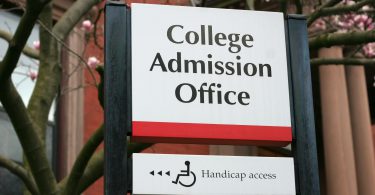In Part 2, we continued our community college baseball mini-series, with a focus on academics. We left you with a lot of unanswered questions about the importance of becoming an NCAA qualifier and doing well academically out of high school. Grades are important even if you plan to attend a community college. This article picks up where we left off. We will finish our review of academics and provide you with the resources you need if you are planning on transferring. Here’s what we will cover:
- Understanding eligibility status: qualifier, partial-qualifier, and non-qualifier
- Impact of eligibility status and academic success on the transfer requirements
- Importance of having a transfer plan from day 1 at community college
The best resource for understanding the transfer process is the NCAA 2-Year Transfer Guide and other NCAA resources. The guide contains all the information you need to plan your transfer process and understand the requirements. This should always be your primary source of information. This article will summarize some of the most important parts of the transfer process. We’ll help you understand some of the most important concepts before you look at the entire guide.
Understanding Eligibility and Transfer Status
If you go to a community college directly out of high school, you fall into one of three initial eligibility and transfer classifications. This status is based off of meeting D1 and/or D2 academic requirements. These requirements include your core GPA, required core courses, and SAT/ACT scores. You are considered one of the following:
Non-Qualifier: You did not meet the NCAA requirements to play D1 or D2 baseball out of high school.
Partial Qualifier: You met the NCAA D2 requirements, but did not meet the more strict NCAA D1 requirements out of high school.
Qualifier: You met both the NCAA D1 and D2 requirements out of high school.
If you do not register with the NCAA Eligibility Center, you are automatically considered a non-qualifier for transfer purposes until you register. Playing community college doesn’t require it. However, you will want to register with the Eligibility Center if you met qualifying requirements. Qualifier status will make transfer requirements much easier. The status will also provide you with the opportunity to transfer anytime after completing a full-time semester or quarter. You can always go back and submit high school transcripts, test scores, and proof of high school graduation to gain your qualifying certification while at community college. However, it will be easier to do right after high school graduation when it is fresh in your mind. No matter what your initial eligibility status might be, you must register with the eligibility center to transfer to a D1 or D2 program.
Understanding Transfer Requirements
Transfer requirements are much different for qualifiers (and partial qualifiers transferring to a D2 program) than they are for non-qualifiers. Page 9 of the transfer guide has a complete breakdown of transfer options and requirements based on every qualifying status. Here is a quick glance at a few major differences and why it’s important to keep your grades up and strive to be a qualifier, even if you plan to attend a community college:
Qualifier 2-year to 4-year transfer requirements (D1):
- At least one full-time semester or quarter at a Community/Junior College (summer doesn’t count)
- An average of 12 transferable credits per term
- A minimum GPA of 2.5
Non-Qualifiers 2-year to 4-year transfer requirements (D1):
- Need to complete their AA Degree (2-year degree)
- Need to have 48 semester hours (72 quarter hours) of transferable credit* (for example a student who completes AA degree in 4 semesters must have 48 transferable credits)
- Need to have 3 semesters or 4 quarters at the Junior College
- Need to have 6 transferable semester hours (8 quarter hours) of English, 3 semester hours (4 quarter hours) of Math and Science
- Only 18 semester hours (27 Quarter hours) may be earned over the summer
- Only 9 semester hours (13.5 Quarter hours) may be earned the summer before enrolling at the 4-year school
- Make progress towards a bachelors degree
*Transferable credits are determined by the institution where you will transfer. There are different than eligibility credits while at community college. 4-year schools want to see courses that can be applied towards a degree. Avoid taking too many PE and/or non-traditional credits that cannot be applied towards a degree.*
Division 2 baseball has slightly different transfer requirements, including lower transfer GPA. Those requirements are clearly laid out in the NCAA transfer guide. We strongly recommend you plan on meeting the D1 qualifications and keep all your options open.
Have a Plan from Day 1
A big mistake that JUCO-bound players make is thinking that grades don’t matter. As long as you plan to keep playing baseball, your academics always matter! One of the great things about community college baseball is that it gives players who struggled in the classroom in high school a second chance. If you plan to keep playing at a 4-year program, you must plan your coursework and meet transfer requirements starting from day 1! Many community college programs will help their players stay on track with transfer requirements, but some simply don’t have the time or resources.
The truth is that you are responsible for making sure you take the right classes, the right credits, and are able to transfer to the school of your choice. Don’t confuse community college eligibility with the ability to transfer. If you plan to play at a 2-year school and beyond, it will serve you well to get familiar with the NCAA 2-Year Transfer Guide now and plan to keep playing baseball.
We conclude our 4 part community college baseball mini-series by stepping away from academics and looking into the differing levels of play at community colleges, be sure to check back next week!
________
*D3 transfer requirements are less regulated and are based largely around each school’s entry requirements. A summary of all D3 eligibility rules can be found here.







